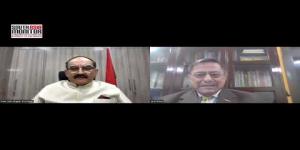Nepal’s ever-growing social security expenses pose fiscal challenge to government
Resource crunch amid the pandemic forced the Nepal government to look for measures to cut its ever-expanding social security expenses, which touched almost $1.9 billion --roughly 30 percent of the total revenues-- in the last fiscal

Resource crunch amid the pandemic forced the Nepal government to look for measures to cut its ever-expanding social security expenses, which touched almost $1.9 billion --roughly 30 percent of the total revenues-- in the last fiscal. Authorities are now asking people to give up their allowances voluntarily if they can do so.
Social security allowances include direct cash transfer to vulnerable, marginalized, and socially and economically backward people, health insurance for aged people, pensions, retirement benefits, and compensation to people affected by natural disasters, and scholarships for targeted groups.
Despite the drop in revenue collection and increased spendings on managing the pandemic, former prime minister KP Sharma Oli last year had increased all direct cash transfer assistance to almost 33 percent. The move came at the time when Oli was struggling politically and was largely seen as political. However, it increased the government liabilities significantly.
“The increasing social security allowances, however, will increase the liability of the government in the long run,” Shanta Raj Subedi, a former finance secretary, was quoted as saying by The Kathmandu Post newspaper. “Besides cash transfers, there are other various schemes of social security which are also increasing the cost of overall social security.”
Even in the current fiscal 2021-22, social security allowances are likely to cost around one-fourth of the total estimated revenue.
Rameshore Khanal, another former finance secretary, said the country may face an economic crisis like Greece if revenues drop significantly and social security expenses remain “unrestrained.” He further said a large portion of the budget being spent on social security would mean the government has limited resources to spend on constructing vital infrastructure and improving them.
In 2020-21, almost 3.45 million people received around $559 million in direct cash from the government. In the last decade alone, the number of the total beneficiaries under the social security net almost doubled.
Although authorities had introduced the initiative for people to give up these benefits, they have now issued notice to provincial and local administrations, asking them to acknowledge and honor people who volunteer to give up their social security assistance.
Even in comparison to other developed countries, Nepal’s share of spending on the social security net is quite high and could not be sustained in the coming decades.
A White Paper presented this month by the government on the country’s economic situation showed the country’s debt to Gross Domestic Product (GDP) ratio increased to 40.5 percent in 2020-21 from just 22.7 percent in 2016-17.
(SAM)









Post a Comment